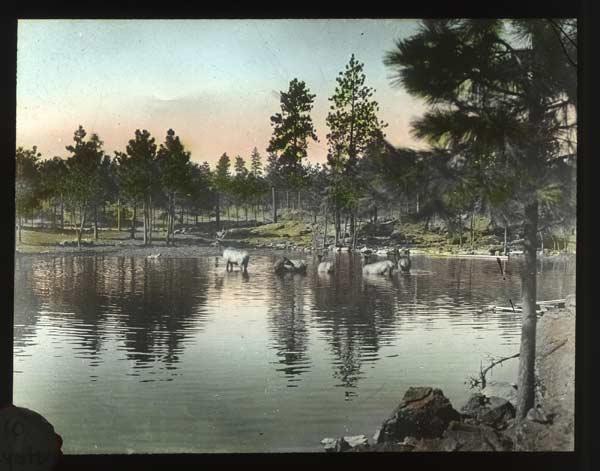Image

(Photo courtesy of Washington State Digital Archives)
These days, a picture like this one more likely to come from the Olympic Rainforest than central Spokane. But in 1910, these elk were bathing in the middle of what is now Manito Park. Manito Park is an important part of Spokane history because it encouraged settlement in a new area. The park and its surrounding neighborhood, which were once considered “way out” from the original Spokane townsite, are now central parts of Spokane. In the early days, Manito Park was called “Montrose Park” because of a rose garden that grew on a high hill. The Elk Pond, which lasted from 1905 to 1932, was located where the new rose garden stands today. Unfortunately, the Great Depression made feeding the menagerie of animals at Manito Zoo too expensive, so the elk were ousted. Manito Park is now home to flower gardens, greenhouses, swans, geese and duck (but no elk). Pictures like this one were taken to encourage people to visit Spokane. Most of these images were used in promotional literature, but several also appeared in reports from Spokane’s Board of Park Commissioners from 1891 to 1913. This picture comes from a collection of 123 glass lantern slides showing scenes from all over the city of Spokane. More than Manito Park, the collection also has snapshots from swimming pools, playgrounds, winter scenes and the Spokane River. If you want to see more from the "Spokane City Parks, Lantern Slides, 1900-1930," check out the collection here on the State Digital Archives website.